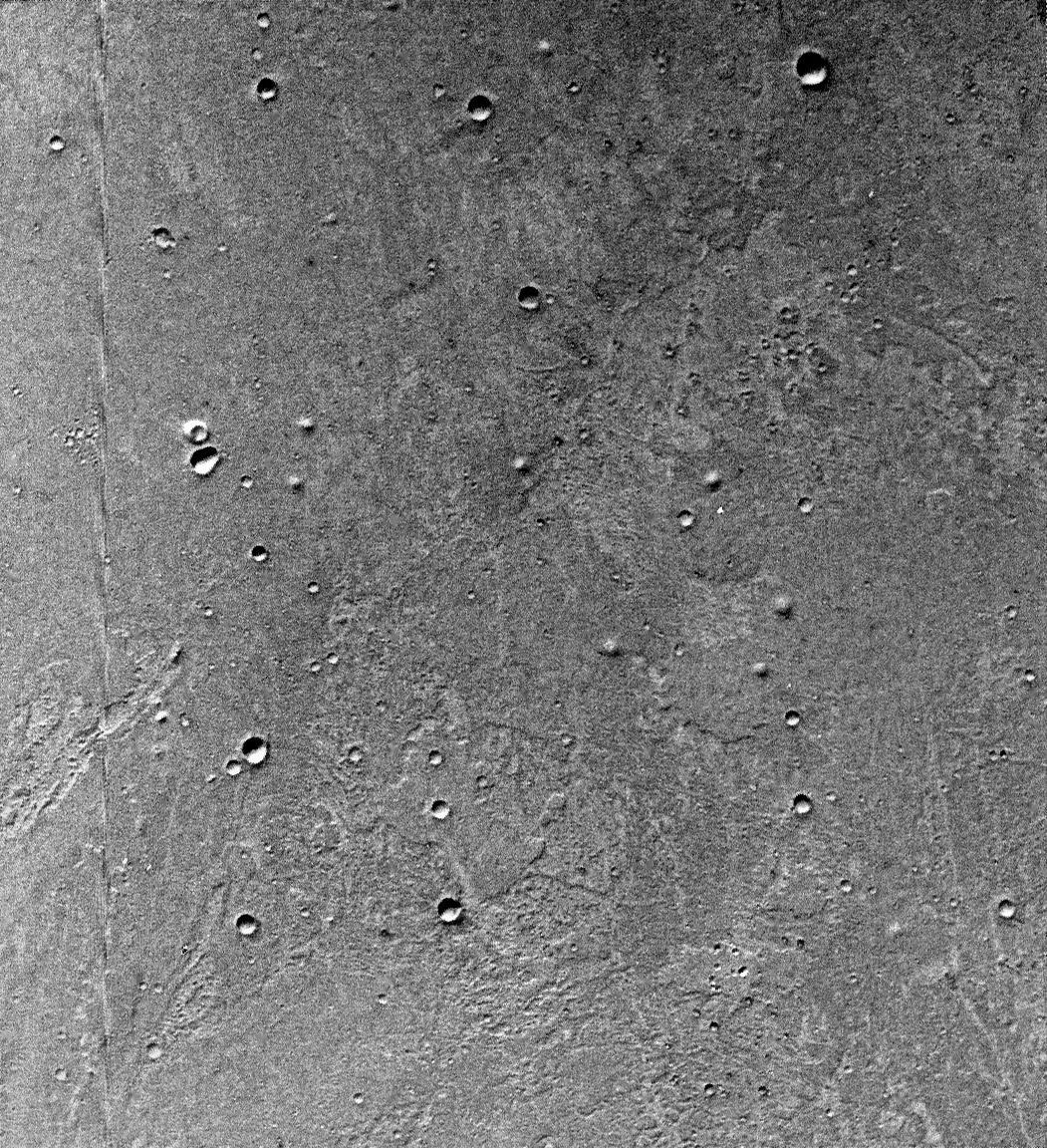So Mariner 9 data produced four sites, prime and backup for each lander. But Viking had much better cameras and would have to certify them as safe. The very first pictures of the A1 site were fascinating... much too fascinating to be confident about landing. Here is Viking Orbiter 1 image 006A33 (the 33rd image taken by Viking Orbiter 1 on orbit 006) in the A1 ellipse. The resolution is 41m/pixel. Mariner 9's was 1 km/pixel for most areas, this looked featureless.
#mars #viking
